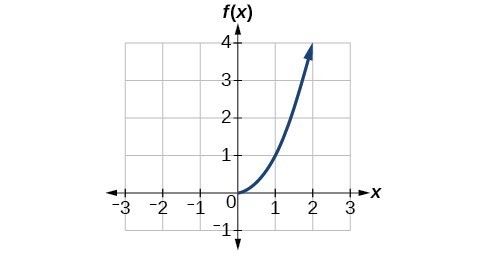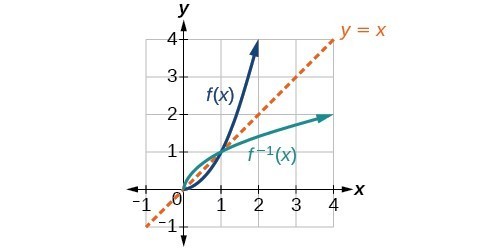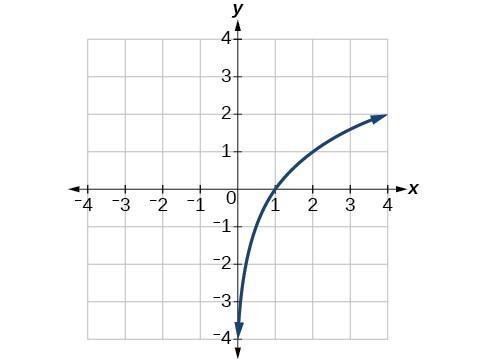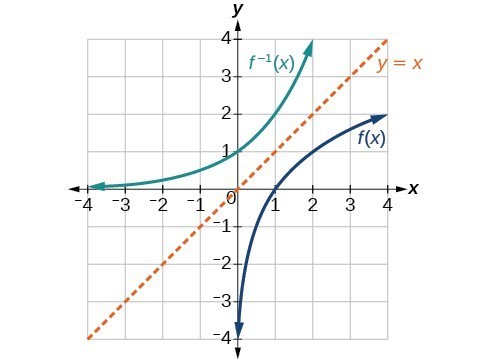Use the graph of a function to graph its inverse
Now that we can find the inverse of a function, we will explore the graphs of functions and their inverses. Let us return to the quadratic function restricted to the domain , on which this function is one-to-one, and graph it as in Figure 7.
 Figure 7. Quadratic function with domain restricted to [0, ∞).
Figure 7. Quadratic function with domain restricted to [0, ∞).Restricting the domain to makes the function one-to-one (it will obviously pass the horizontal line test), so it has an inverse on this restricted domain.
We already know that the inverse of the toolkit quadratic function is the square root function, that is, . What happens if we graph both and on the same set of axes, using the axis for the input to both
We notice a distinct relationship: The graph of is the graph of reflected about the diagonal line , which we will call the identity line, shown in Figure 8. Figure 8. Square and square-root functions on the non-negative domain
Figure 8. Square and square-root functions on the non-negative domainThis relationship will be observed for all one-to-one functions, because it is a result of the function and its inverse swapping inputs and outputs. This is equivalent to interchanging the roles of the vertical and horizontal axes.
Example 10: Finding the Inverse of a Function Using Reflection about the Identity Line
Given the graph of , sketch a graph of . Figure 9
Figure 9Solution
This is a one-to-one function, so we will be able to sketch an inverse. Note that the graph shown has an apparent domain of and range of , so the inverse will have a domain of and range of .
If we reflect this graph over the line , the point reflects to and the point reflects to . Sketching the inverse on the same axes as the original graph gives us the result in Figure 10. Figure 10. The function and its inverse, showing reflection about the identity line
Figure 10. The function and its inverse, showing reflection about the identity lineTry It 9
Draw graphs of the functions and .
SolutionQ & A
Is there any function that is equal to its own inverse?Yes. If , then , and we can think of several functions that have this property. The identity function does, and so does the reciprocal function, because
Any function , where is a constant, is also equal to its own inverse.
